Cockpit display screen portion with transitional graphical user interface
Shapiro , et al. April 20, 2
U.S. patent number D916,717 [Application Number D/642,114] was granted by the patent office on 2021-04-20 for cockpit display screen portion with transitional graphical user interface. This patent grant is currently assigned to Rockwell Collins, Inc.. The grantee listed for this patent is Rockwell Collins, Inc.. Invention is credited to David L. Leedom, Matthew M. Lorch, Geoffrey A. Shapiro.

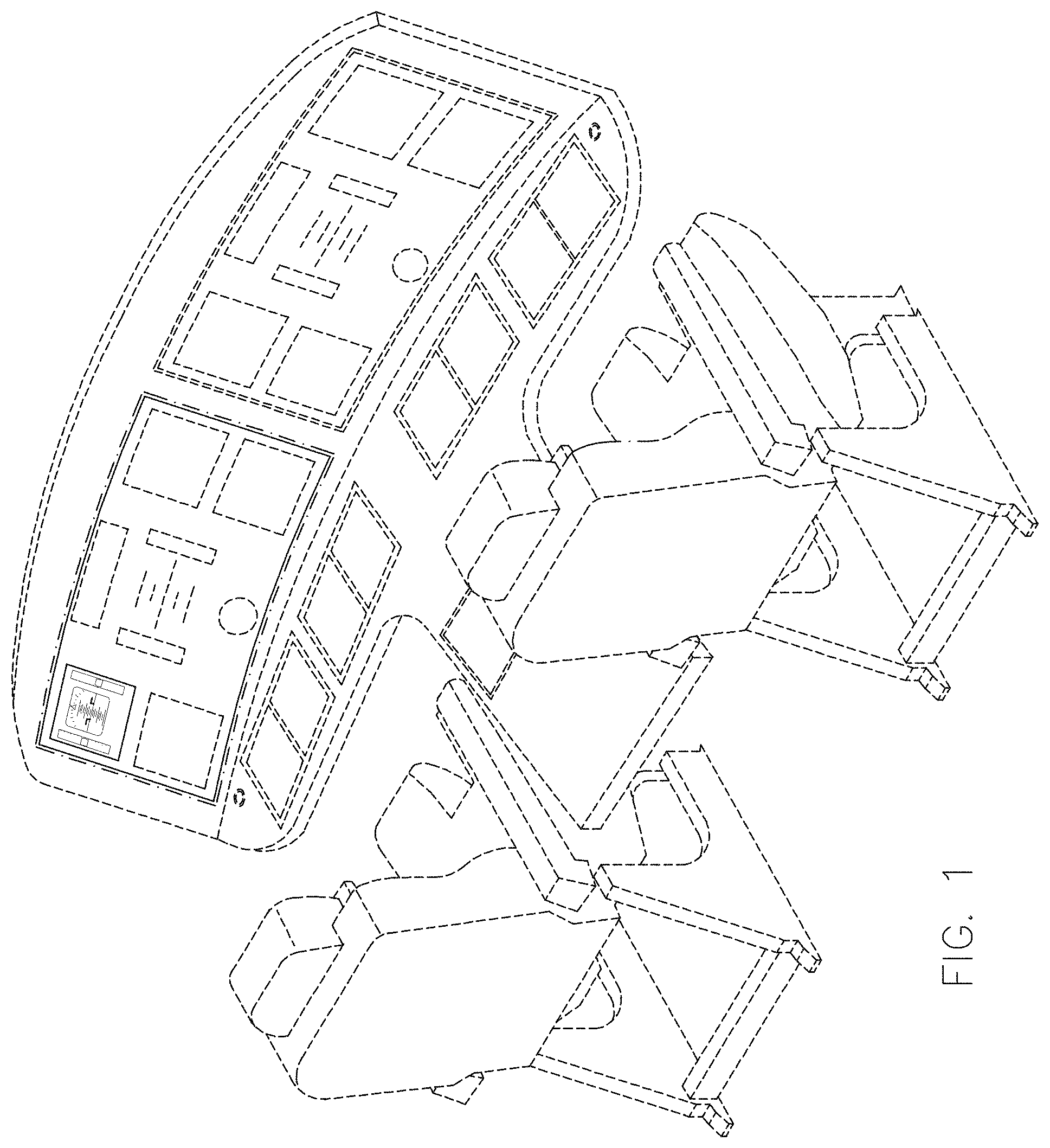
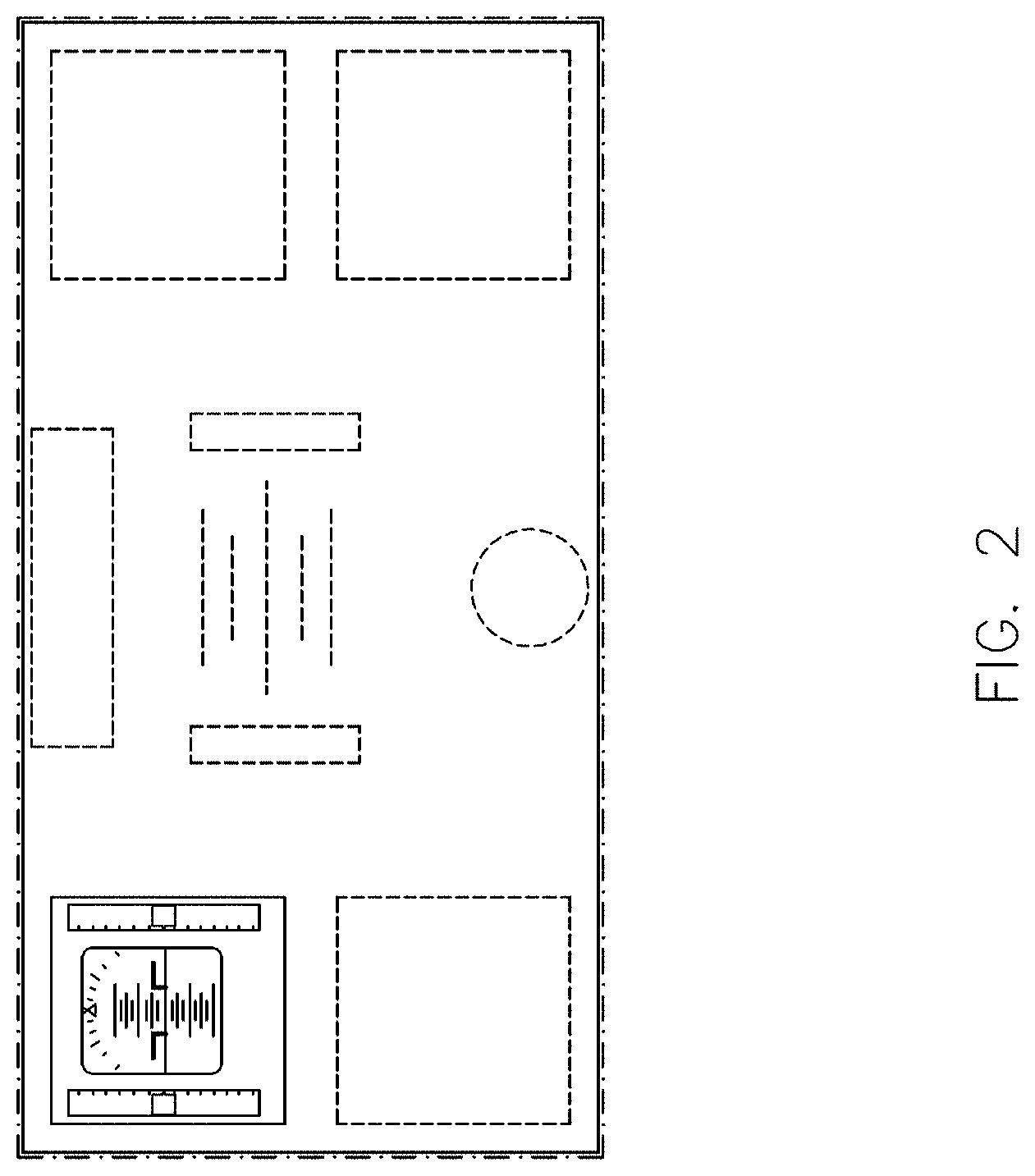
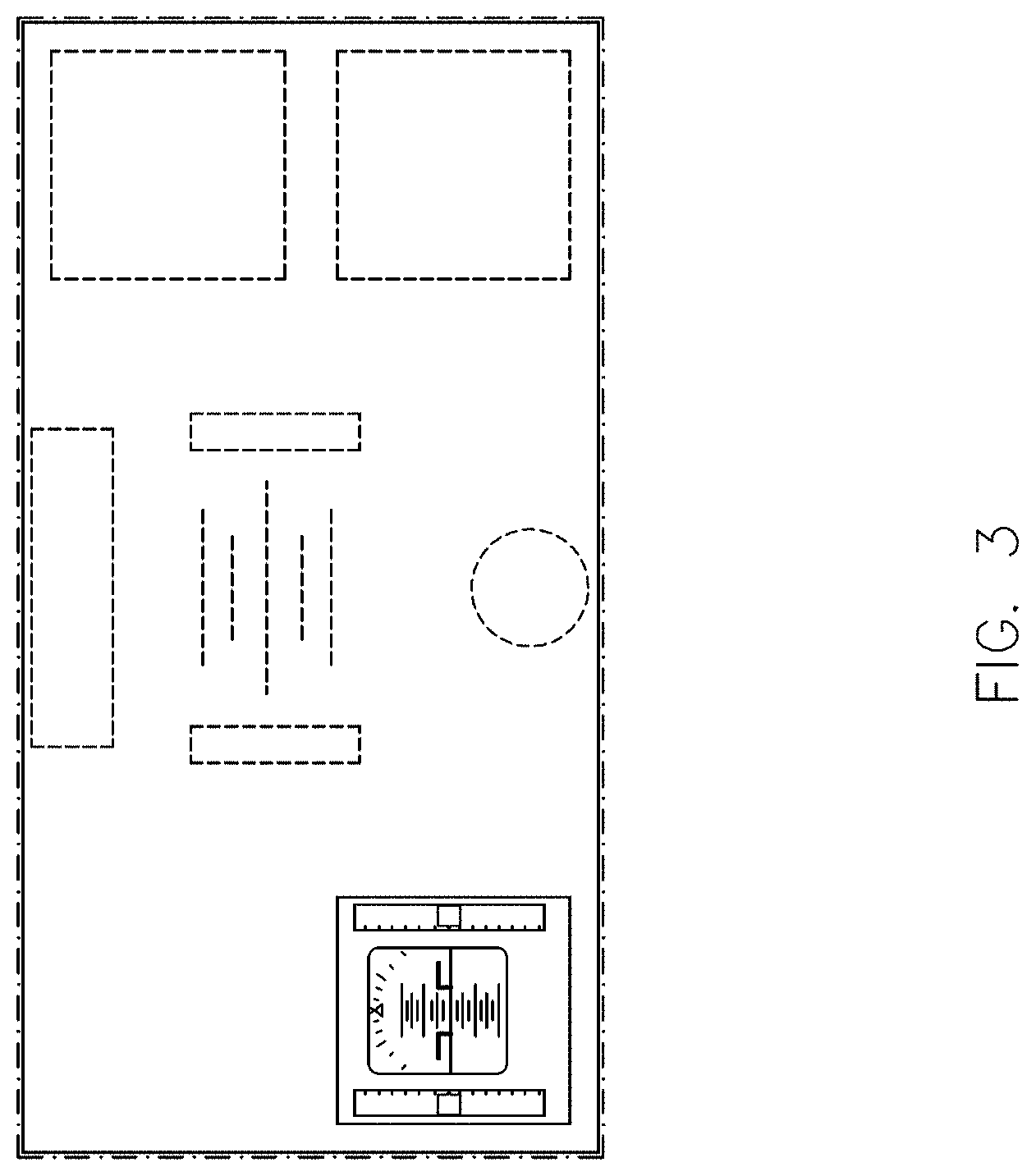

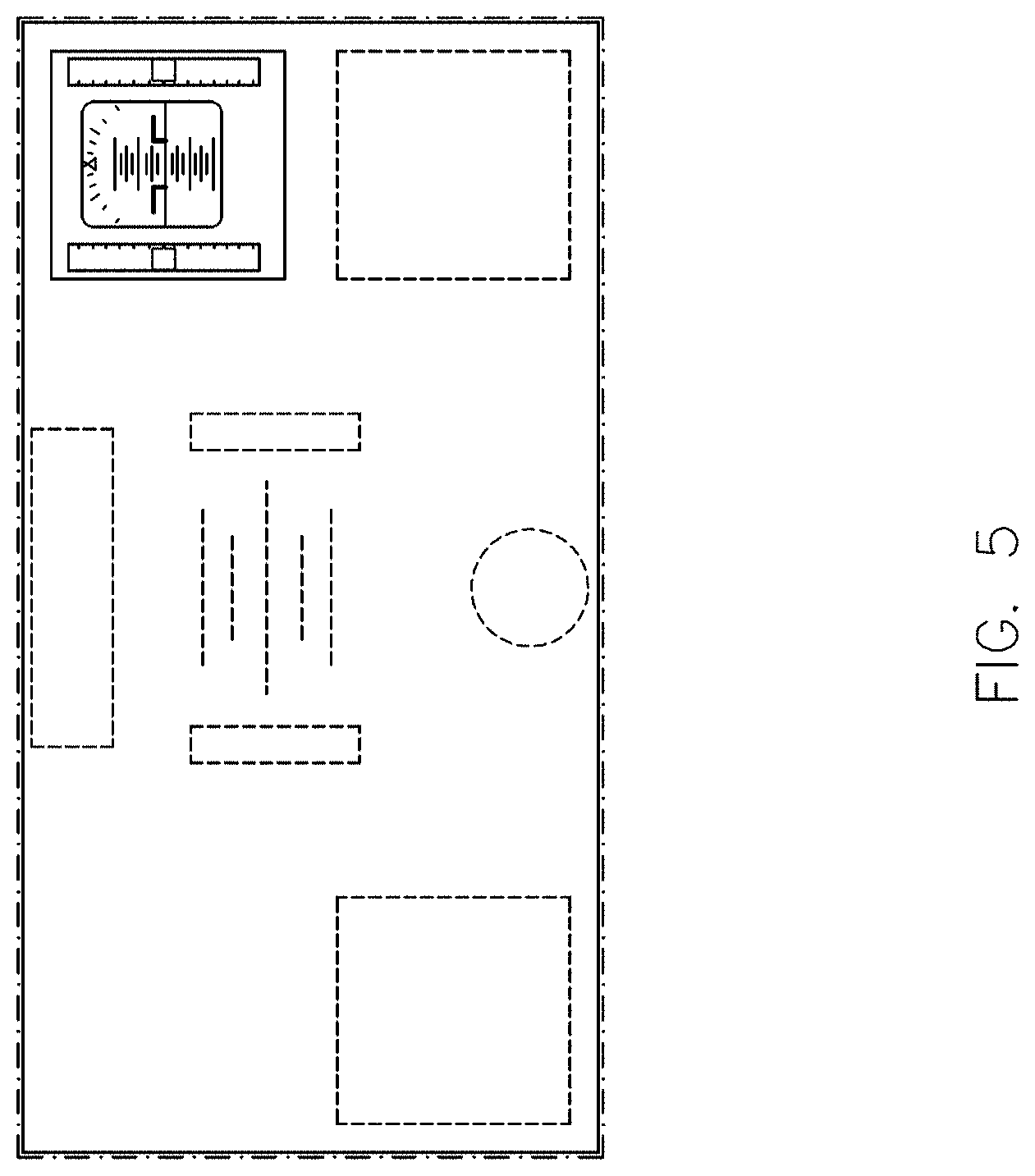

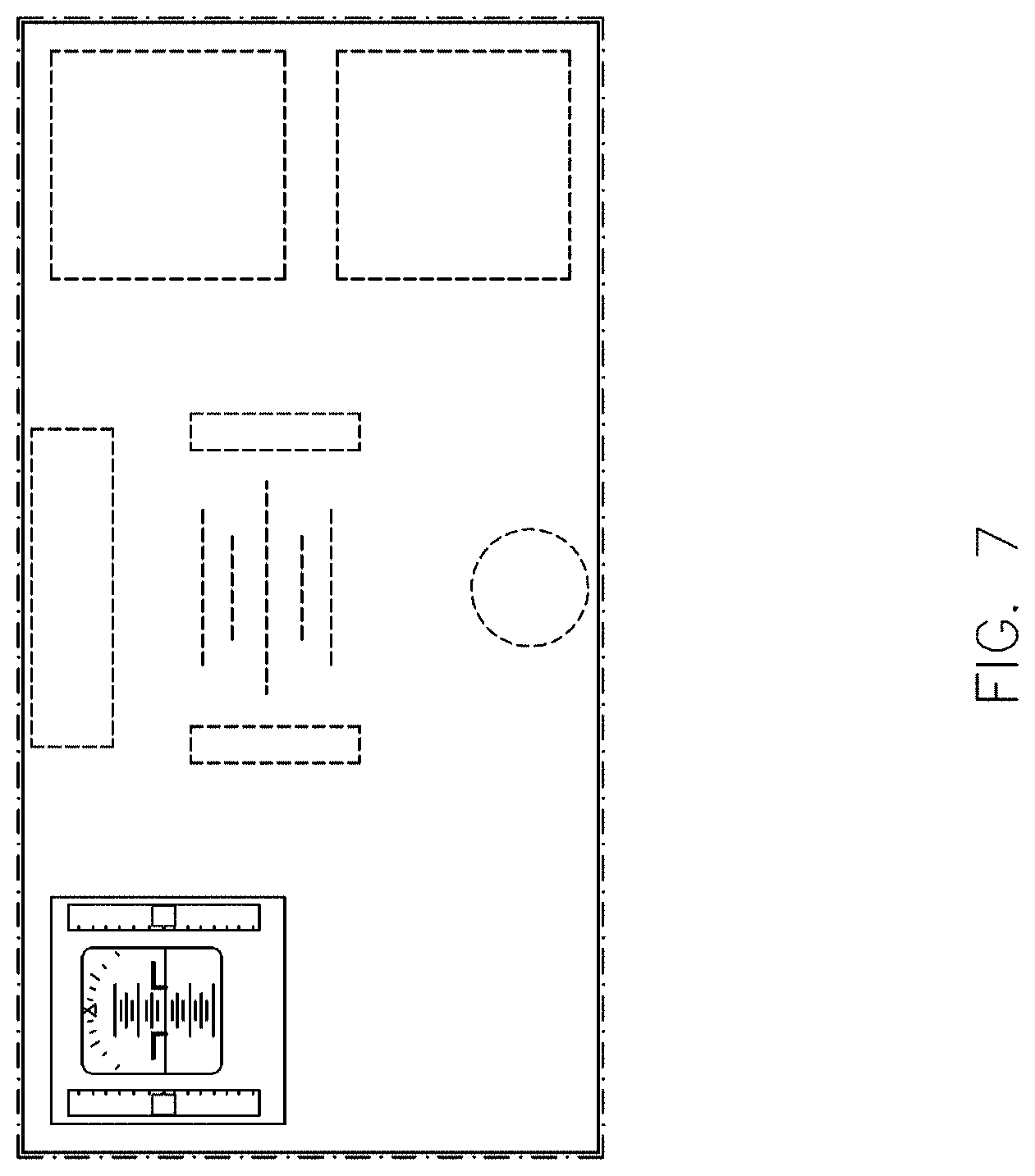

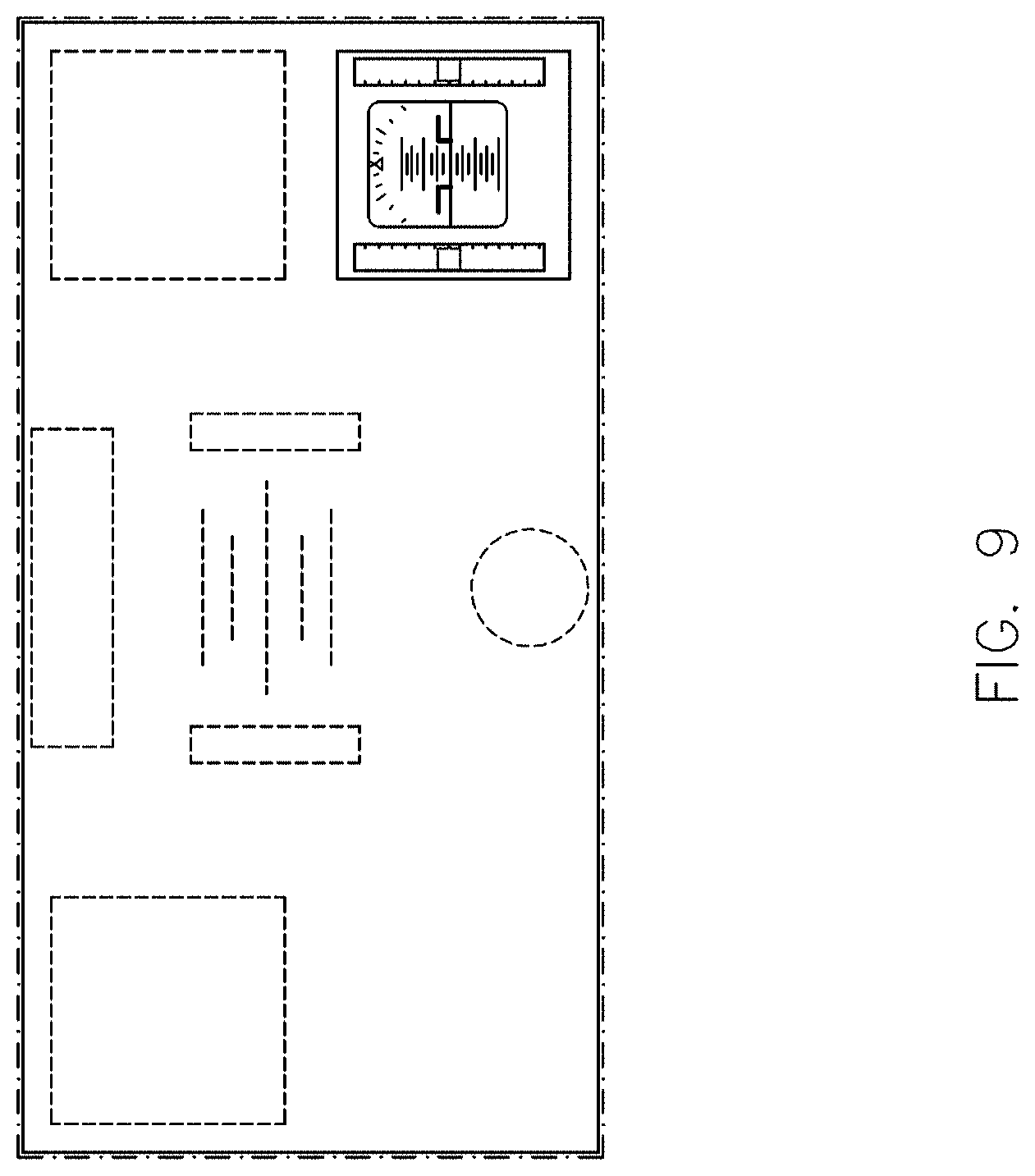
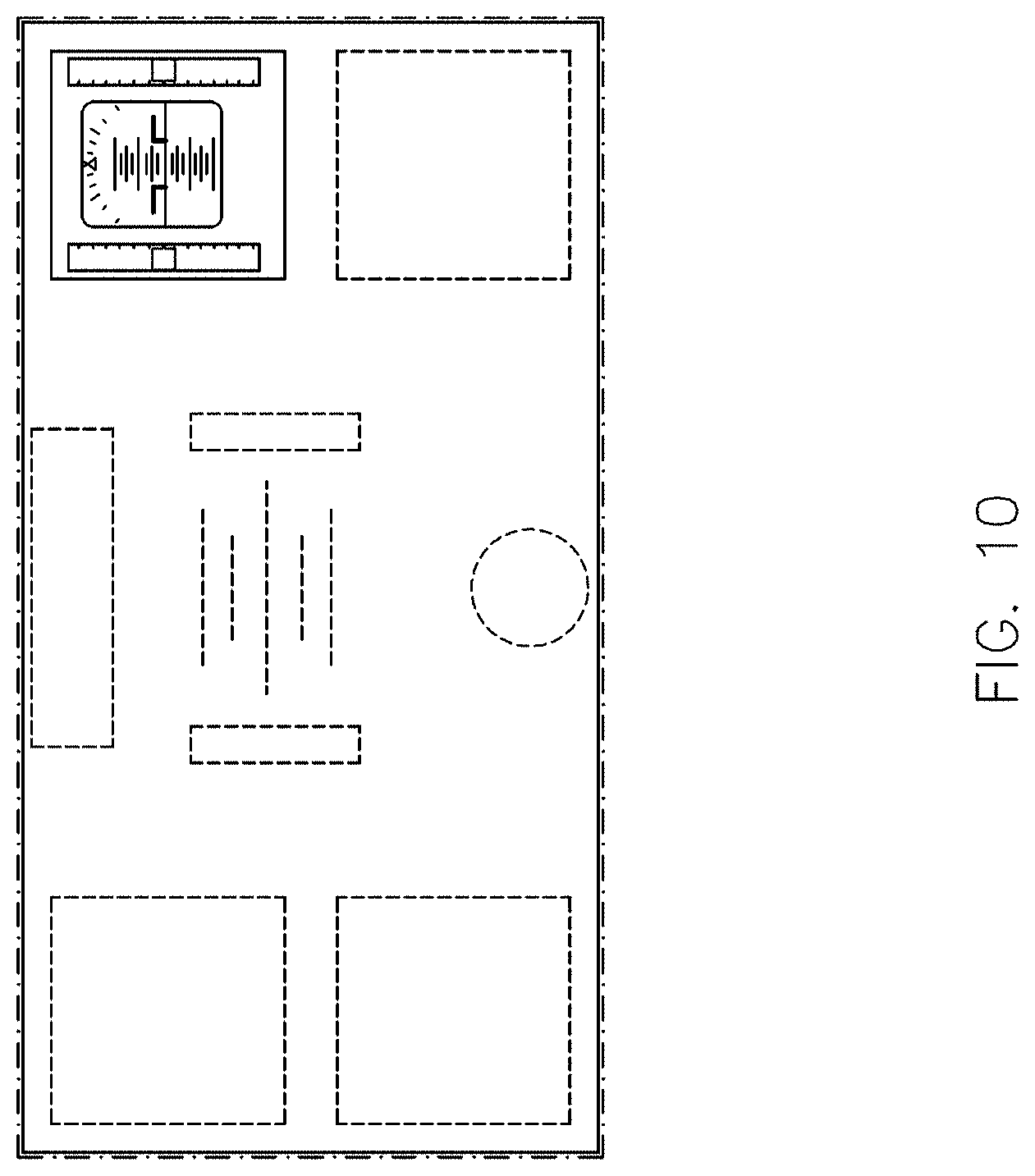
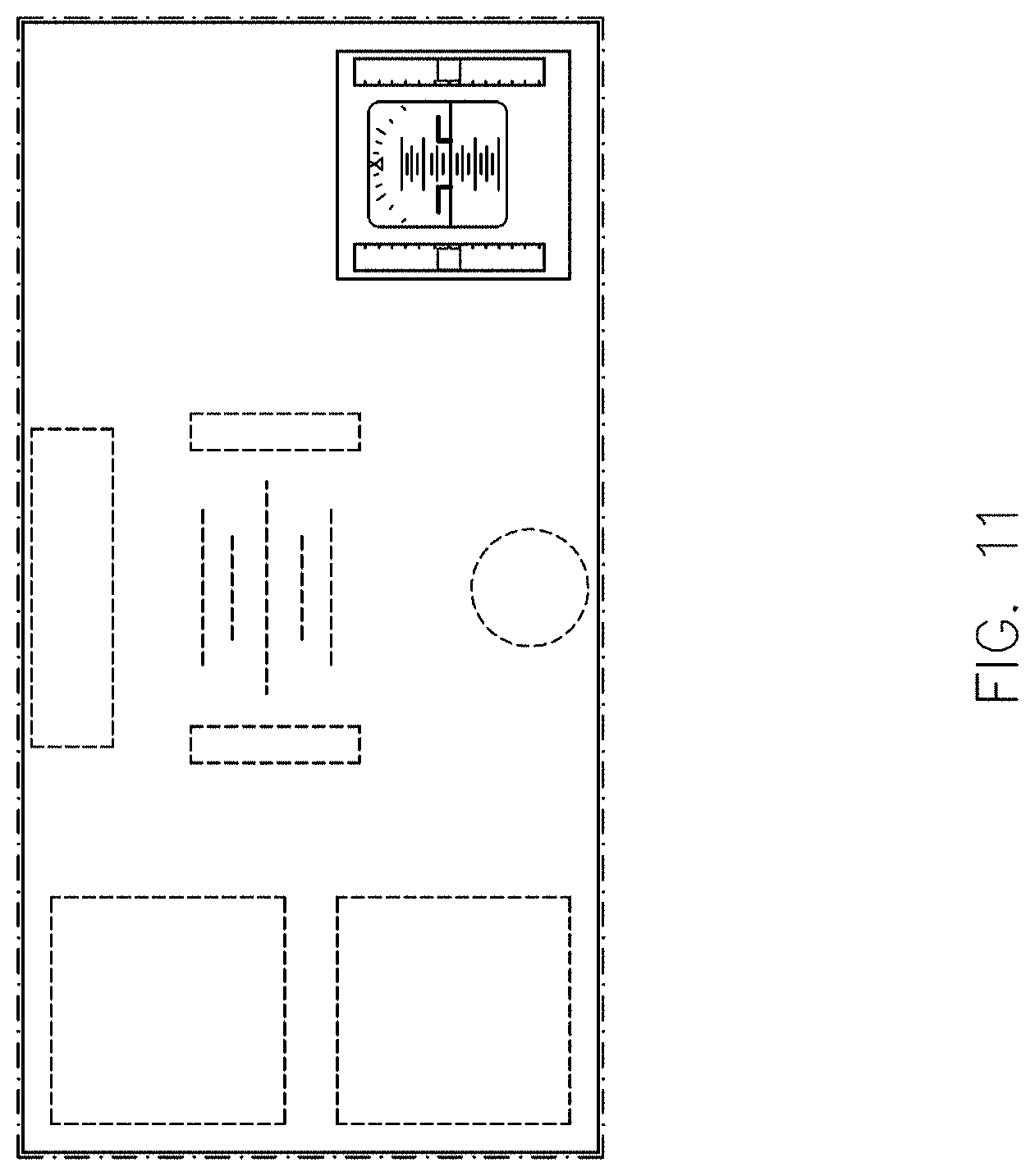
View All Diagrams
| United States Patent | D916,717 |
| Shapiro , et al. | April 20, 2021 |
Cockpit display screen portion with transitional graphical user interface
Claims
CLAIM The ornamental design for a cockpit display screen portion with a transitional graphical user interface, as shown and described.
| Inventors: | Shapiro; Geoffrey A. (Cedar Rapids, IA), Leedom; David L. (Center Point, IA), Lorch; Matthew M. (Cedar Rapids, IA) | ||||||||||
|---|---|---|---|---|---|---|---|---|---|---|---|
| Applicant: |
|
||||||||||
| Assignee: | Rockwell Collins, Inc. (Cedar
Rapids, IA) |
||||||||||
| Appl. No.: | D/642,114 | ||||||||||
| Filed: | March 27, 2018 |
Related U.S. Patent Documents
| Application Number | Filing Date | Patent Number | Issue Date | ||
|---|---|---|---|---|---|
| 29539379 | Sep 14, 2015 | ||||
| Current U.S. Class: | D14/485 |
| Current International Class: | 1404 |
| Field of Search: | ;D14/485-495 ;D20/10,11,22-33,39,40 |
References Cited [Referenced By]
U.S. Patent Documents
| 6690299 | February 2004 | Suiter |
| 7307549 | December 2007 | Firra |
| 8159464 | April 2012 | Gribble et al. |
| 8193948 | June 2012 | Shapiro |
| 8364328 | January 2013 | Hedrick |
| 8768541 | July 2014 | Detouillon |
| 8779946 | July 2014 | Gribble et al. |
| D726758 | April 2015 | Bourret et al. |
| 9019128 | April 2015 | Kim |
| D736239 | August 2015 | Maner |
| D736241 | August 2015 | Sic |
| 9132913 | September 2015 | Shapiro |
| 9280904 | March 2016 | Bourret |
| D773532 | December 2016 | Gauci |
| D791815 | July 2017 | Dzjind |
| 9703476 | July 2017 | Pappas |
| 9824689 | November 2017 | Shapiro |
| D866568 | November 2019 | Park |
| D896829 | September 2020 | Shi |
| 2003/0025719 | February 2003 | Palmer et al. |
| 2005/0156777 | July 2005 | King |
| 2007/0008188 | January 2007 | Firra |
| 2011/0029919 | February 2011 | Woltkamp |
| 2013/0215023 | August 2013 | Bourret |
| 2014/0277857 | September 2014 | Bourret et al. |
| 2015/0211883 | July 2015 | He |
| 2016/0179327 | June 2016 | Zammit-Mangion |
| 2016/0180718 | June 2016 | Shapiro et al. |
| 2016/0350049 | December 2016 | Barnidge |
| 2017/0075558 | March 2017 | Shapiro |
| 2018/0322792 | November 2018 | Pratap |
Other References
|
EFIS--Primary Flight Display (PFD)--Airspeed Display (iFly 747-400), by Subsonic Flight Training, YouTube [online], published on Dec. 28, 2016, [retrieved on Sep. 23, 2020], retrieved from the Internet <URL: https://www.youtube.com/watch?v=hjrELZXYUNQ> (Year: 2016). cited by examiner . FSX How to Load Gauges in Position, by ArmchairAviator, YouTube [online], published on Mar. 9, 2010, [retrieved on Sep. 23, 2020], retrieved from the Internet <URL: https://www.youtube.com/watch?v=40Amlh4Vfdl> (Year: 2010). cited by examiner . File: Primary Flight Display of a Boeing 737-800.png, by WestNest, YouTube [online]. published on May 5, 2015, [retrieved on Sep. 23, 2020], retrieved from the Internet <URL: https://en.wikipedia.org/wiki/File:Primary_Flight_Display_of_a_Boeing_737- -800.png> (Year: 2015). cited by examiner . Aircraft Electronic Instrument Systems EIS EFIS System, by Xpert Group, YouTube [online], published on Nov. 30, 2017, [retrieved on Sep. 23, 2020], retrieved from the Internet <URL:https://www.youtube.com/watch?v=MtMNDOcfg5k> (Year: 2017). cited by examiner . Touch Screens Are Tested for Piloting Passenger Jets, by Clark, nytimes.com [online], published Jul. 5, 2013, [retrieved Mar. 24, 2017], retrieved from the Internet <URL:http://www.nytimes.com/2013/07/06/technology/passenger-jets-testi- ng-touchscreen-technology.html>. cited by applicant. |
Primary Examiner: Whitmore; Ian F
Attorney, Agent or Firm: Suiter Swantz pc llo
Description
FIG. 1 is a perspective view of a cockpit display screen portion with a transitional graphical user interface illustrated in a cockpit display environment, showing the image that is isolated in FIG. 2;
FIG. 2 is a front view of the portion indicated by dot-dash broken line in FIG. 1 showing an image in a transitional sequence of the claimed design;
FIG. 3 is a front view of the portion indicated by dot-dash broken line in FIG. 1 showing an image in a transitional sequence of the claimed design;
FIG. 4 is a front view of the portion indicated by dot-dash broken line in FIG. 1 showing an image in a transitional sequence of the claimed design;
FIG. 5 is a front view of the portion indicated by dot-dash broken line in FIG. 1 showing an image in a transitional sequence of the claimed design;
FIG. 6 is a front view of the portion indicated by dot-dash broken line in FIG. 1 showing an image in a transitional sequence of the claimed design;
FIG. 7 is a front view of the portion indicated by dot-dash broken line in FIG. 1 showing an image in a transitional sequence of the claimed design;
FIG. 8 is a front view of the portion indicated by dot-dash broken line in FIG. 1 showing an image in a transitional sequence of the claimed design;
FIG. 9 is a front view of the portion indicated by dot-dash broken line in FIG. 1 showing an image in a transitional sequence of the claimed design;
FIG. 10 is a front view of the portion indicated by dot-dash broken line in FIG. 1 showing an image in a transitional sequence of the claimed design;
FIG. 11 is a front view of the portion indicated by dot-dash broken line FIG. 1 showing an image in a transitional sequence of the claimed design;
FIG. 12 is a front view of the portion indicated by dot-dash broken line in FIG. 1 showing an image in a transitional sequence of the claimed design;
FIG. 13 is a front view of the portion indicated by dot-dash broken line in FIG. 1 showing an image in a transitional sequence of the claimed design;
FIG. 14 is a front view of the portion indicated by dot-dash broken line in FIG. 1 showing an image in a transitional sequence of the claimed design;
FIG. 15 is a front view of the portion indicated by dot-dash broken line in FIG. 1 showing an image in a transitional sequence of the claimed design;
FIG. 16 is a front view of the portion indicated by dot-dash broken line in FIG. 1 showing an image in a transitional sequence of the claimed design; and,
FIG. 17 is a front view of the portion indicated by dot-dash broken line in FIG. 1 showing an image in a transitional sequence of the claimed design.
The appearance of the transitional graphical user interface sequentially transitions between the images shown in FIGS. 2 and 3 in a first embodiment, between the images shown in FIGS. 2 and 4 in a second embodiment, between the images shown in FIGS. 2 and 5 in a third embodiment, between the images shown in FIGS. 6 and 7 in a fourth embodiment, between the images shown in FIGS. 6 and 8 in a fifth embodiment, between the images shown in FIGS. 6 and 9 in a sixth embodiment, between the images shown in FIGS. 10 and 11 in a seventh embodiment, between the images shown in FIGS. 10 and 12 in an eighth embodiment, between the images shown in FIGS. 10 and 13 in a ninth embodiment, between the images shown in FIGS. 14 and 15 in a tenth embodiment, between the images shown in FIGS. 14 and 16 in an eleventh embodiment, and between the images shown in FIGS. 14 and 17 in a twelfth embodiment. The process or period in which one image transitions to another image forms no part of the claimed design.
The horizontally-aligned solid-lined rectangle illustrates the cockpit display screen portion.
The dot-dash broken line in FIG. 1, indicating the portion shown enlarged in FIGS. 2-17, forms no part of the claimed design.
The broken-line subject matter within the horizontally-aligned solid-lined rectangle showing portions of a graphical user interface is included for the purpose of illustrating portions of the article of manufacture and form no part of the claimed design.
The broken-line subject matter outside of the horizontally-aligned solid-lined rectangle in FIG. 1 illustrates a cockpit environment that forms no part of the claimed design.
* * * * *
References
D00000

D00001

D00002

D00003

D00004

D00005

D00006

D00007

D00008

D00009

D00010

D00011

D00012
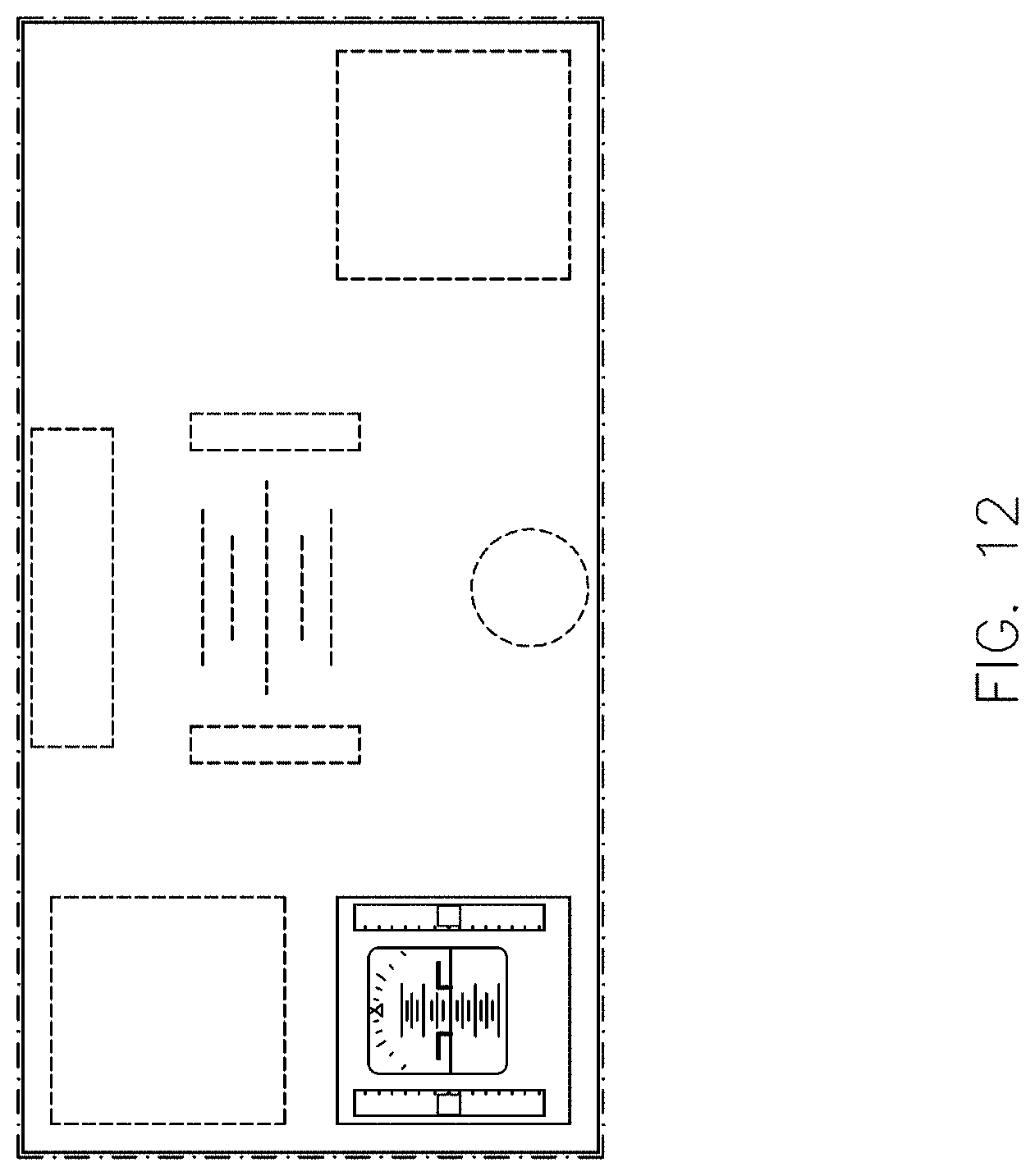
D00013

D00014
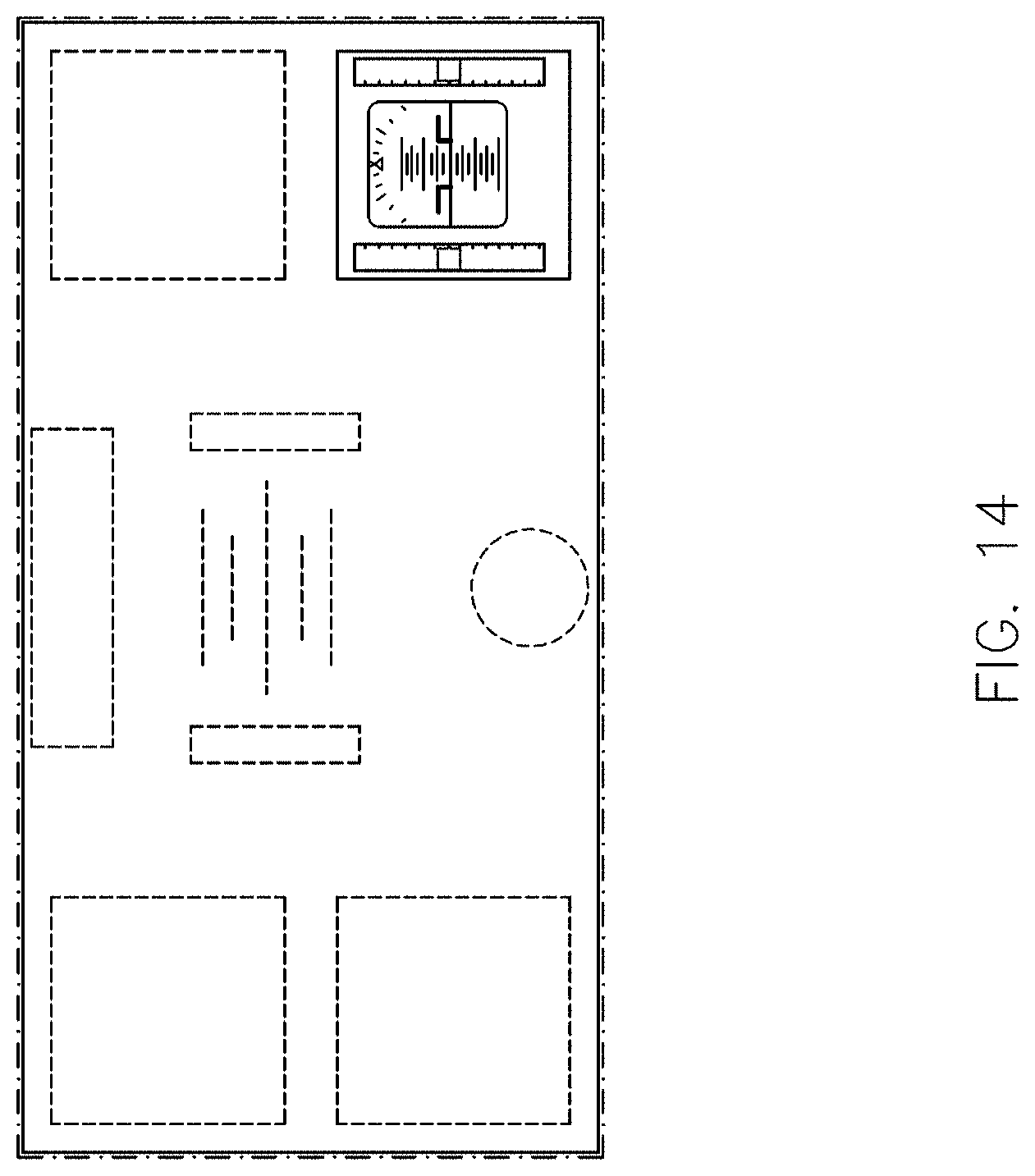
D00015

D00016

D00017
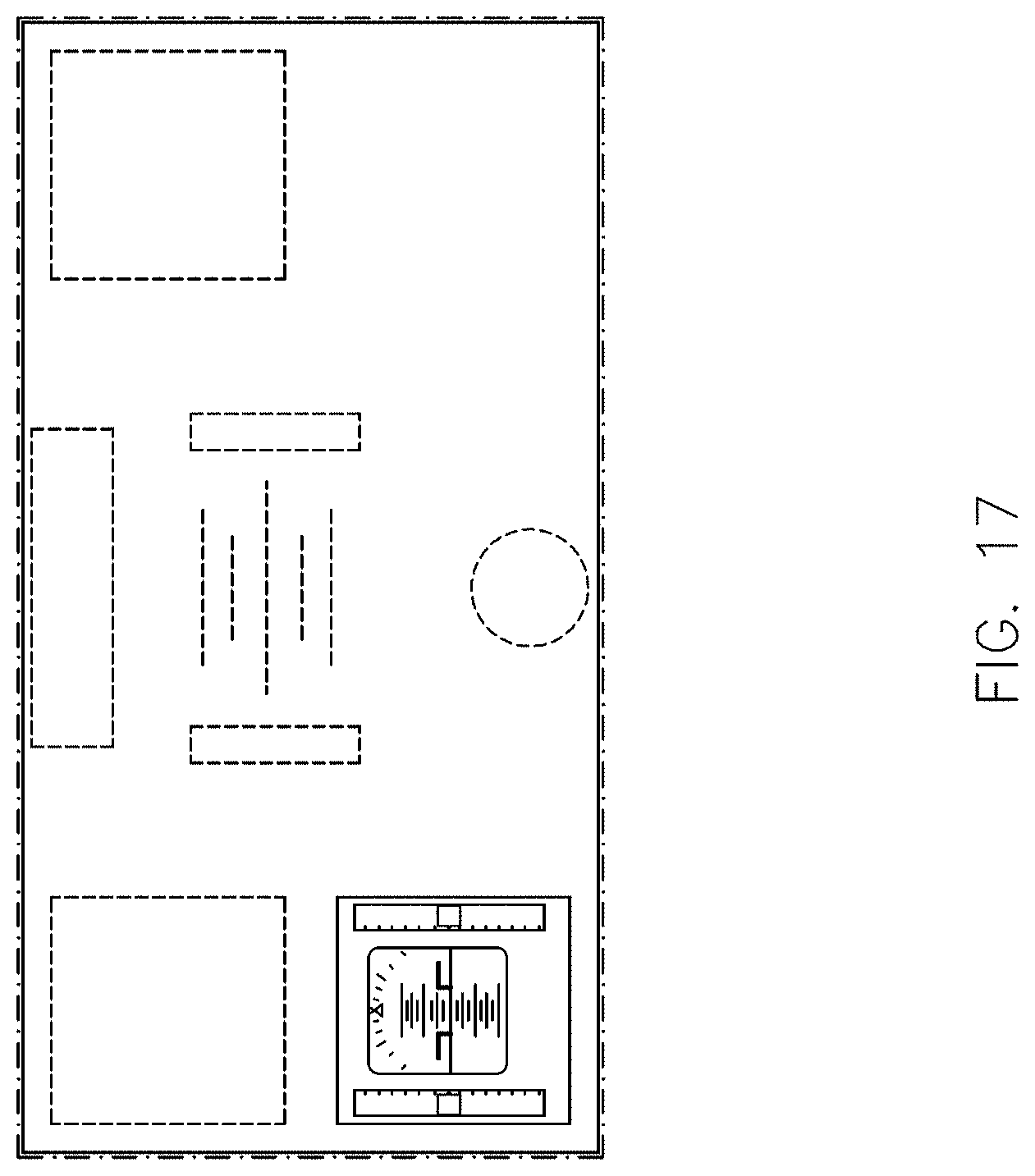
XML
uspto.report is an independent third-party trademark research tool that is not affiliated, endorsed, or sponsored by the United States Patent and Trademark Office (USPTO) or any other governmental organization. The information provided by uspto.report is based on publicly available data at the time of writing and is intended for informational purposes only.
While we strive to provide accurate and up-to-date information, we do not guarantee the accuracy, completeness, reliability, or suitability of the information displayed on this site. The use of this site is at your own risk. Any reliance you place on such information is therefore strictly at your own risk.
All official trademark data, including owner information, should be verified by visiting the official USPTO website at www.uspto.gov. This site is not intended to replace professional legal advice and should not be used as a substitute for consulting with a legal professional who is knowledgeable about trademark law.